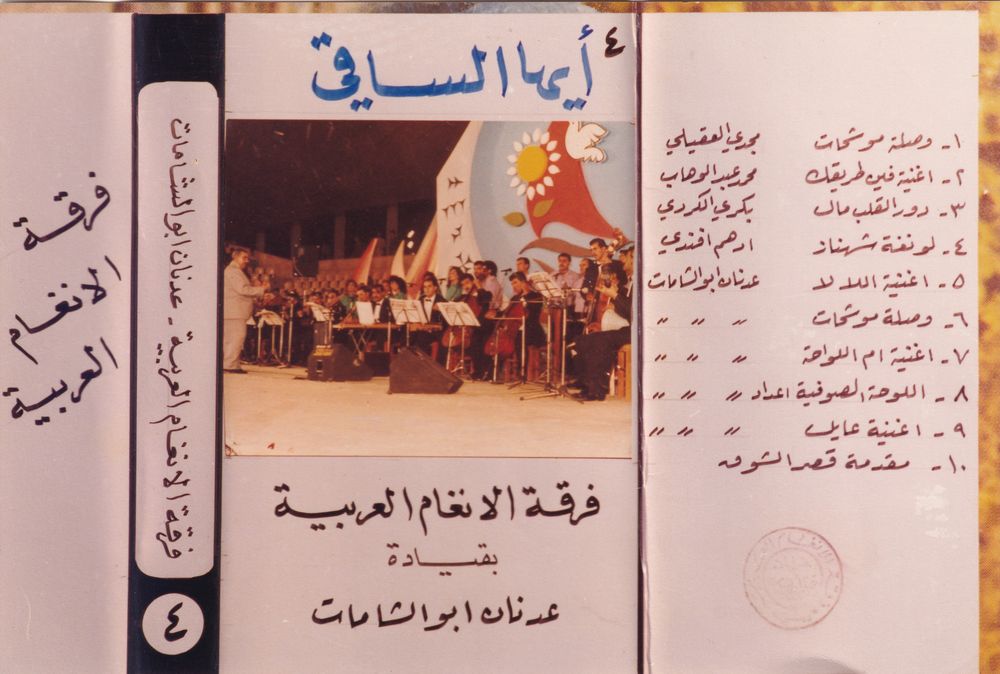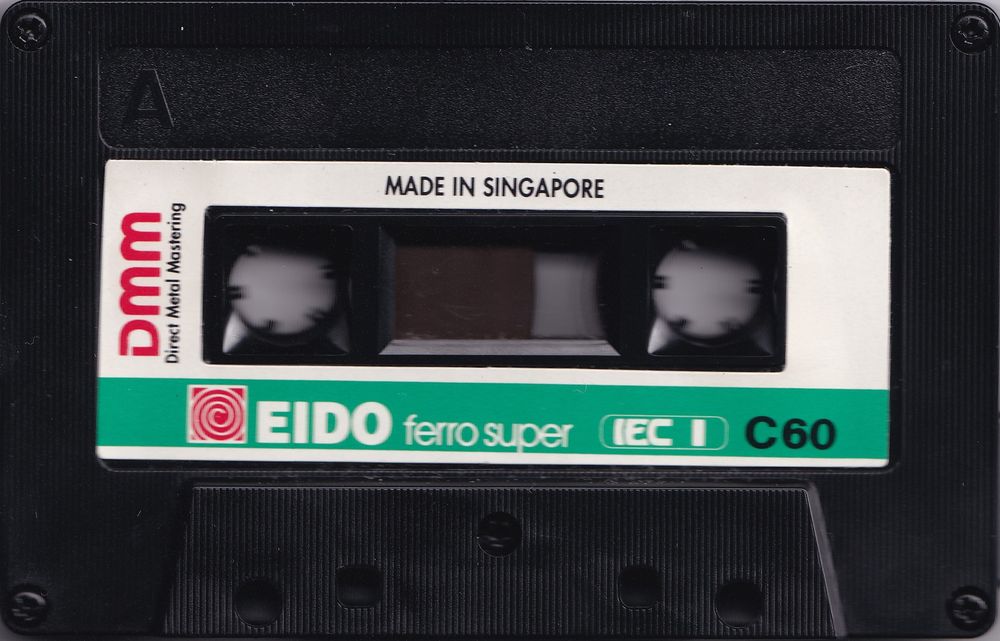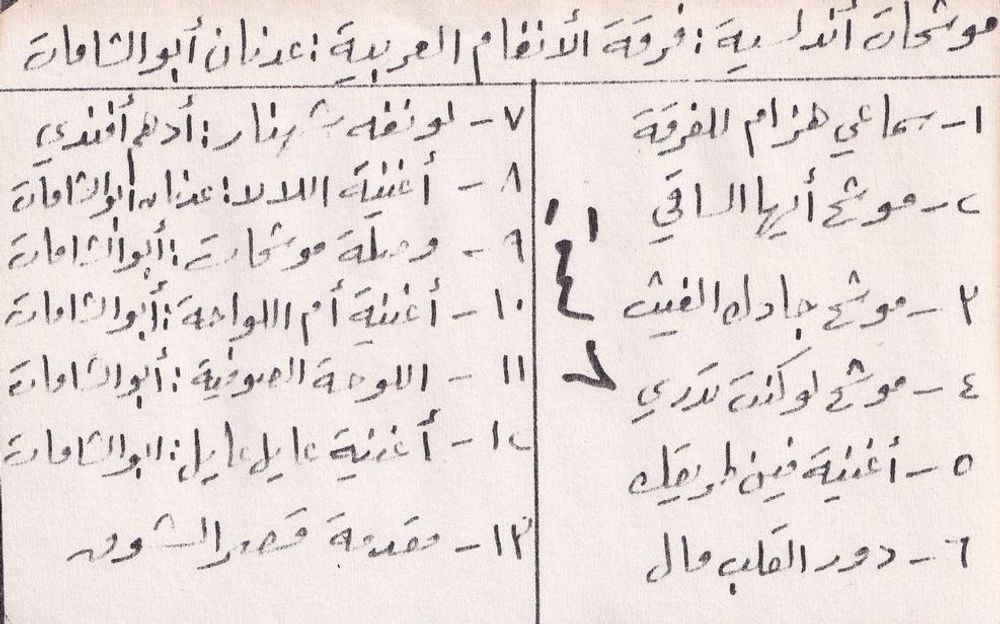




Adnan Abu Al Shamat
Aaiyouha Al Saqi (Hey Cupbearer)
SIDE A
- Sama'i Houzam (Sama'i In Houzam Scale)
- Muwashah Aiyouha Al Saqi (Muwashah Hey Cupbearer)
- Muwashah Law Kunta Tadri (Muwashah If You Knew)
- Fen Tareeqak? (Where Are You Going?)
- Daour Al Qalbu Mal (Daour The Heart Inclined)
- Waslat Muwashahat (A Suite of Muwashahat)
- Al Lawha Al Soufeiya (The Sufi Picture)
SIDE B
- Al Lala (The Lala)
- Waslat Muwashahat (A Suite of Muwashahat)
- Tal'aa Men Bet Abouha (She's Going Out of Her Father's Head)
- 'Aal Saleheyia Ya Saliha (To the Saleheiya You Saliha)
- Oum Al Lauwaha (Mother of the Lauwaha)
- Ya Tura (I Wonder)
- Al Lawha Al Soufeiya (The Sufi Picture)
- 'Aayel 'Aayel (Unjust Unjust)
- Mukaddimat Qaser Al Shawq (Introduction To Qasr al-Shawq)
Location Issued
Damascus, Syria
Artist Origin
Damascus, Syria
More Info
On this cassette, we hear a variety of musical pieces, including daour, muwashahat, and songs performed by the Al Angham Al Arabiyya Ensemble, under the direction of the artist Adnan Abu Al Shamat. Among these compositions are Muwashah Ayousha Al Saqi, Daour Al Qalbu Mal, and Al Lawha Al Soufeiya. Adnan Abu Al Shamat (1934-2011), a native of Damascus, began his musical studies at the age of sixteen. In 1950, he enrolled in the Eastern Musical Institute in Damascus and graduated in 1954. There, he received a comprehensive musical education from renowned musicians. He studied musical notation and rhythm with Hassan Derkazalli, solfège with Ilya Sermandes, and muwashshahat with Saeed Farhat. He also learned Eastern melodies and maqamat from Yahya Al-Saudi, oud from Fouad Mahfouz and Muhammad Al-Nahhas, and double bass from Felix Khoury. Additionally, he studied the Samah dance under Abdul Wahab Safi and musical literature with Nassif Al-Ikhtyar. In Aleppo, Al Shamat took his first steps in composition, creating music for singers at Radio Aleppo. He also composed twelve songs for Sabah Fakhri, including muwashshahat and poems. In 1989, he founded the Arabic Melodies Orchestra, which he conducted. These performances can be heard on this recording. The orchestra's mission was to showcase Arab musical heritage, with a particular focus on Syrian traditions, while also presenting Abu Al Shamat’s own compositions—an extension of this rich heritage. The orchestra gained significant popularity both locally and across the Arab world. It participated in the Mahba Festival for several years, as well as the Arab Music Festival in Cairo in 1993 and 1998, performing at the Cairo Opera House. In 1995, it took part in the Testour Festival for Malouf in Tunisia and held several concerts there. Additionally, the orchestra performed extensively in various cities across Syria.